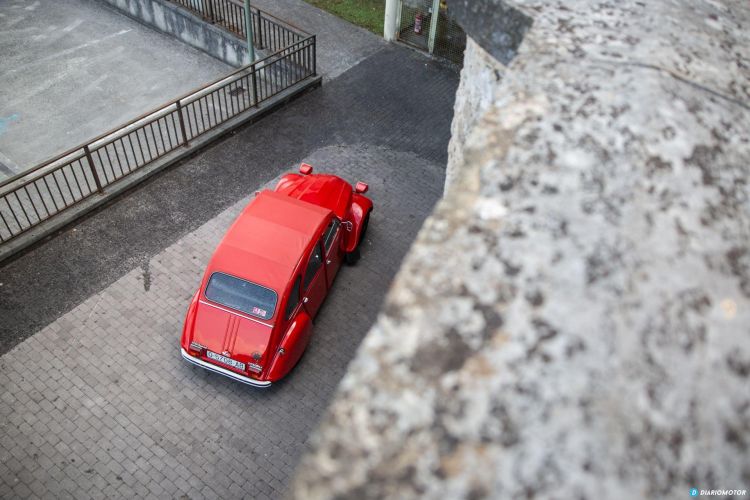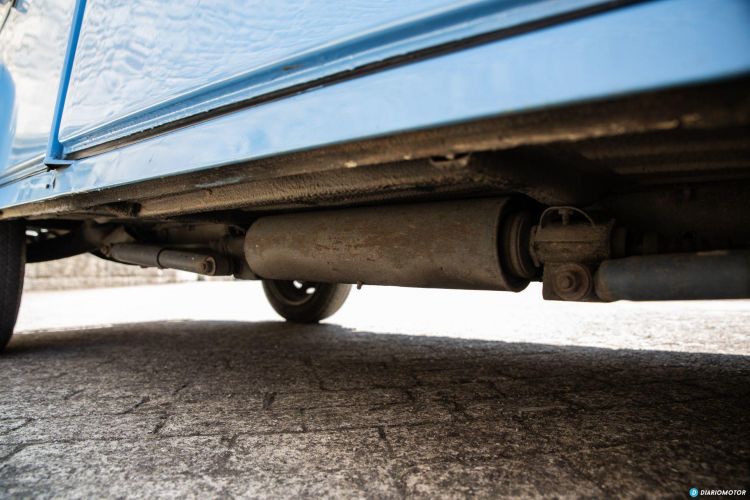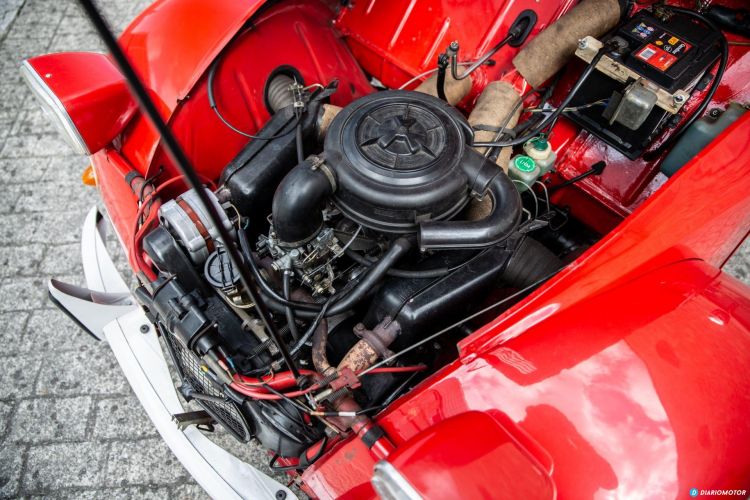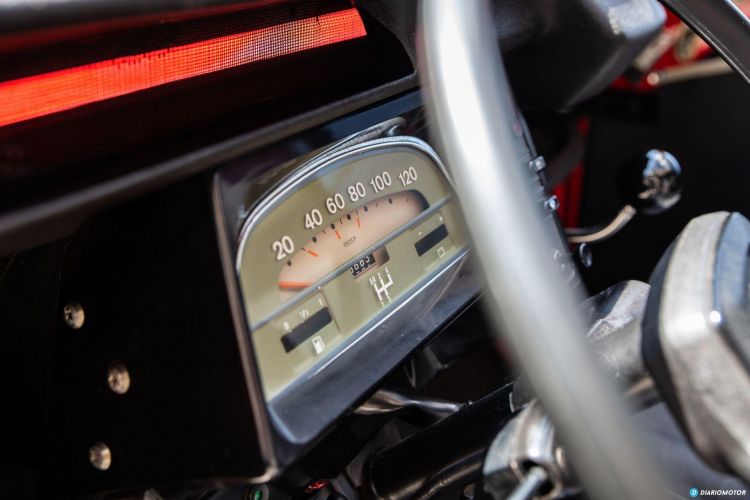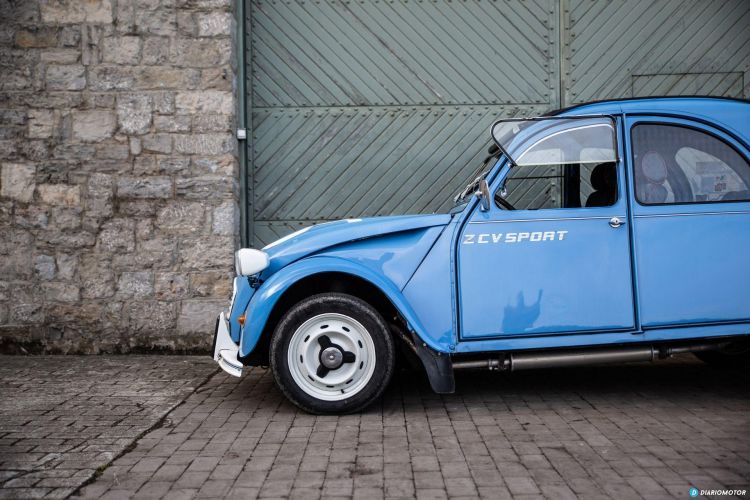Yesterday we published in our YouTube channel one of our latest classic car tests. The test of the iconic Citroën 2CV, a car designed before the Second World War and marketed between 1949 and 1990. A car that was manufactured in Spain for decades, and was known as a “can of sardines” because of the canvas that covered its passenger compartment. Although it may seem like a simple classic car with a nice look, the Citroën 2CV is much more than that. Is one of the most radically innovative cars of all time. And we are going to show you why.
The origin of the Citroën 2CV
The history of the Citroën 2CV begins in 1934, when Michelin rescued a bankrupt Citroën and set out to motorize France. A rural France that could not afford a car, which at that time was a luxury product, and which still depended on animal traction for its movements and crops. The TPV (Toute Petite Voiture) project, which would translate as “a very small car”, had clear objectives: France needed an umbrella with wheels that could reach 50 km/h and carry four people and 50 kilos of cargo from the farm, to the market by unpaved roads, and at the lowest possible cost.
Why is it called 2CV? It is not that it had a two-horsepower engine, it is that it had only 2 CV of fiscal power.
In 1936, its development began in the strictest secrecy, and in 1939, its manufacture and sale was approved, one week before the outbreak of World War II. Fearful that development would fall into the wrong hands, almost all prototypes built to date have been disassembled or destroyed. The few that remained served as the basis for its last phase of development, which would culminate in its commercial launch in 1949.
Regarding the TPVs, the 2CV lost its aluminum body in favor of a steel body designed by Flaminio Bertoni, went from using a liquid-cooled engine to a simple air-cooled engine, and abandoned its eight-bar suspension scheme. torsional in favor of a great and simple predictive suspension. The 2CV was an overwhelming success, it was marketed uninterruptedly for 51 years and there were dozens of versions built on the same chassis: from vans to pick-ups, including the great Citroën Mehari, a kind of beach buggy with a fiberglass body.
The genius of the simple
Aesthetically, it was an umbrella on wheels. It competed in aesthetics with horse-drawn carriages. His fenders were one of his hallmarks, and he was the first Citroën to have faired rear wheel arches. It evolved a lot at the design level during the decades in which it was for sale, and the units analyzed, from the eighties, already had square headlights and pilots. However, they kept the canvas roof of all Citroën 2CVs and were absolutely recognizable as a 2CV.
They were the first cars to mount radial tires, developed by Michelin.
The really great thing about this 3.83-meter-long utility was not in sight, it was under its body. The most innovative, without a doubt, was his suspension scheme. Citroën 2CVs were built on a frame of spars and cross members, with the wheels on each side of the car connected by a central “shock bottle”, via tie rods. When one goes down, another goes up. The suspension arms had a friction damper to control their vertical movements. Early units had an “inertia beater” in the hub itself, which was replaced by a shock absorber in succeeding years.
Not only was it a four-wheel independent suspension car, it was the first car with predictive adaptive suspension.. When a wheel moved vertically due to a pothole or sinkhole, the wheel on the same side and opposite axle would “prime” itself, going up or down in anticipation. If we add to this a ground clearance of at least 15 cm – 19 cm in some versions – we are looking at a true SUV, created at a time when cars left current SUVs behind in off-road performance.
It was a true SUV, at a time when the idea of an SUV didn’t even exist.
Two-cylinder boxer mechanics
The Citroën 2CV equipped a 602cc twin-cylinder air-cooled boxer engine, at least in the most evolved versions. Its 29 CV were enough for a 560 kilo car to reach 115 km/h, even if it took more than half a minute to reach 100 km/h. The first Citroën 2CVs with 375 cc engines had only 9 hp. They were always deliberately underpowered, with the aim of ensuring great reliability and durability. In fact, they could go up to 500,000 km without the need for mechanical rebuilding.
The fan was attached to the crankshaft outlet, so it had forced cooling. The higher the speed, the faster the front fan rotated – there was no thermostat, no temperature sensor. In addition, all Citroën 2CVs built up to 1990 could be started using a crank, which doubled as a key for changing wheels. The car’s heating was air heated by the engine itself, channeled into the interior through rudimentary ducts. If the engine was cold, there was no heating at all.
Stray spark ignition, another solution used to simplify its mechanics as much as possible.
The rest of the great technical details of this engine, such as the location of the change, its inboard brakes and other curiosities, you can see them in the video that we have left on these lines.
Citroen 2CV interior
The interior of the Citroën 2CV is simple and spartan. The first units even had a fuel gauge, just a speedometer and ammeter. A modern unit, with a brake fluid level and fuel level indicator, is a luxury by comparison. However, it remains a car obsessed with simplicity: levers, hatches and rotary knobs They allow us to adjust the height of the headlights or open the front hatch, which let in outside air. Its gear lever is very similar to that of a Renault 4: it goes through the firewall and is directly attached to the gearbox.
A tubular structure supports the entire bodywork, allowing lots of space inside and an absolutely flat floor. Although it is a relatively small car, it is a car where four people could travel comfortably. The front seats of these units are not standard, but the rear ones are. Both rows are made up of continuous benches – some units also had individual front seats – similar to beach chairs: a vinyl fabric is mounted on a simple tube structure. If we want to have a picnic with the family, we can get them out of the car very easily.
Its enormous interior height had a reason for being: people wearing hats had to enter inside.
The origin of the roll-up canvas roof was that it was cheaper to manufacture than a sheet metal roof. This roof soon became one of the car’s hallmarks, with all Citroën 2CVs being convertible cars from the factory – although many owners welded sheet metal roofs at the time, to prevent theft. Its trunk had 220 liters, a more than correct figure. All Citroën 2CVs were four-door cars, without trunk communication with the interior. Its evolution, the Citroën Dyane 6, was a five-door, and it corrected this practical defect of the 2CV.
Citroën 2CV dynamic test
At the wheel, the Citroën 2CV is not such a “wobbly” car as it may appear from the outside. Of course it leans ostensibly, but it does not give us a feeling of lack of security. And the reason is that their battle is variable: yes, just as you hear it. When leaning into a curve, the wheelbase on the side the car is leaning on increases by up to 4 cm, achieving exceptional stability – something against what its narrow tires and rocking might lead us to think. His driving touch, on the other hand, is very peculiar.
Forget a precise address. It’s just a rudder to point you in the right direction.
The sound of its boxer engine is thunderous, and the vibrations are clearly felt inside. It is yet another passenger, and on many occasions, on simple slopes, we run out of steam. It is an engine with a very peculiar sound and touch, and forces us to play with gearbox and inertia to maintain an agile rhythm in circulation. It is a car whose comfortable cruise is about 80 km/h, a rate at which we can cross Europe if we want to. Its comfort is exceptionaland off the asphalt it is still a car capable of driving carefree on broken roads.
conclusions
A car revolutionary like few. A disruptive car that showed that a 1936 design could be kept in production until 1990, based on constant improvements that did not alter its original spirit. He showed that innovation could also be radical in the cheapest cars on the market, and that a cheap car could be a great car. It was a much more advanced and disruptive car than contemporaries like the Volkswagen Beetle, and in which cars like the Renault 4 or the Mini They were clearly inspired. A car without which automotive history would have been very different.

